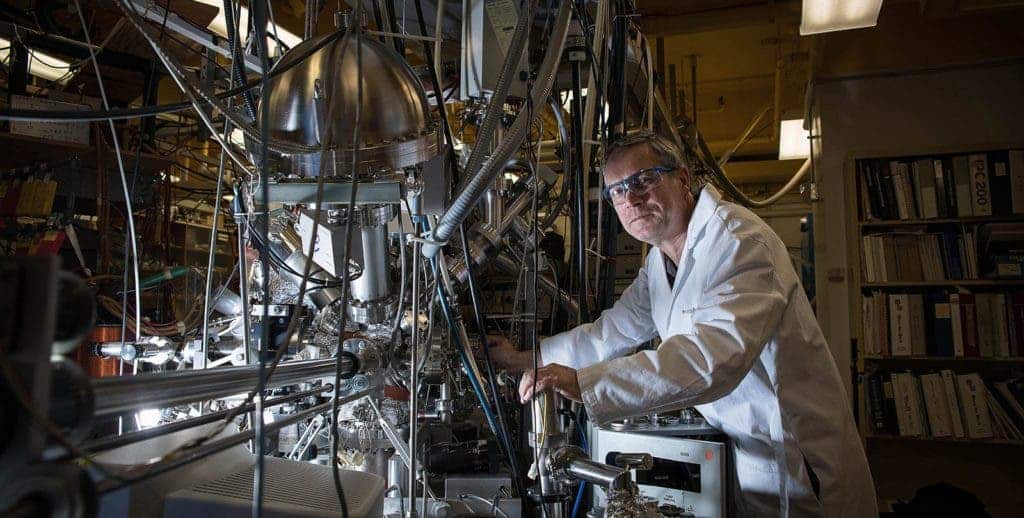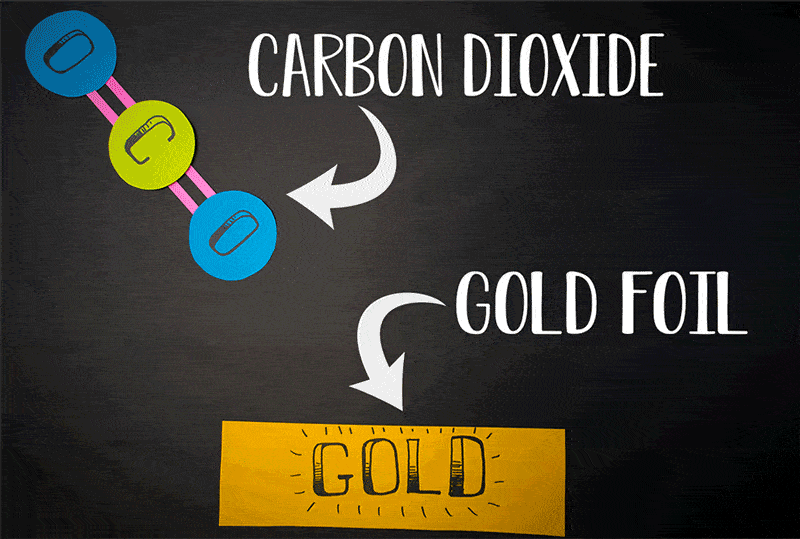When it comes to space, oxygen has been famously known to be in short supply. This is why it was a very pleasant surprise when two researchers at the California Institute of Technology found a way to produce some.

In 2015, the European Space Agency’s Rosetta spacecraft unexpectedly found abundant levels of molecular oxygen in Comet 67Ps atmosphere. Molecular oxygen in space is highly unstable, as oxygen prefers to pair up with hydrogen to make water, or carbon to make carbon dioxide. When oxygen was detected streaming out of the comet, it was believed that the gas had been locked inside the comet for billions of years.
However, in 2017, Caltech researchers proposed that the oxygen was actually created by other compounds slamming into the comet at high speeds. After water or carbon dioxide are discharged from the comet, solar winds accelerate them back into the comet, which creates molecular oxygen.
Now Caltech scientists have created a reactor to reproduce this reaction originally found in outer space. Such technology is appealing, as it could provide future astronauts on Mars a way to generate their own air. It could even be utilized on our home planet to combat our little carbon dioxide problem. The process would remove CO2 from the atmosphere, converting it into O2, giving humans a leg-up in the war against climate change.
It works by crashing CO2 onto the inert surface of gold foil. The foil cannot be oxidized and theoretically should not produce molecular oxygen. However, through the experiment, O2 continued to be emitted from the gold surface. This meant that both atoms of oxygen come from the same CO2 molecule, effectively splitting it in extraordinary style.
“At the time we thought it would be impossible to combine the two oxygen atoms of a CO2 molecule together because CO2 is a linear molecule, and you would have to bend the molecule severely for it to work,” says Konstantinos P. Giapis, a professor of chemical engineering at Caltech. “You’re doing something really drastic to the molecule.”

Most chemical reactions require energy, which is most often provided as heat. However, Giapis’s research shows some unusual reactions can occur by providing kinetic energy. When water molecules are shot like extremely tiny bullets onto surfaces containing oxygen, such as sand or rust, the water molecule can rip off that oxygen to produce molecular oxygen.
In general, excited molecules can lead to unusual chemistry, so we started with that,” Tom Miller, a professor of chemistry at Caltech, says. “But, to our surprise, the excited state did not create molecular oxygen. Instead, the molecule decomposed into other products. Ultimately, we found that a severely bent CO2 can also form without exciting the molecule, and that could produce O2.”
The device the Caltech team devised works like a particle accelerator. It converts carbon dioxide molecules into ions by giving them a charge and then fast-tracking them using an electric field, though at drastically lower energies than you’ll find in a particle accelerator. The device generates only one or two oxygen molecules for every 100 carbon dioxide molecules.
“You could throw a stone with enough velocity at some CO2 and achieve the same thing. It would need to be traveling about as fast as a comet or asteroid travels through space,” said Giapis but stresses this is not the final product. “Is it a final device? No. Is it a device that can solve the problem with Mars? No. But it is a device that can do something that is very hard,” he says. “We are doing some crazy things with this reactor.”
The study was published in the journal Nature Communications






